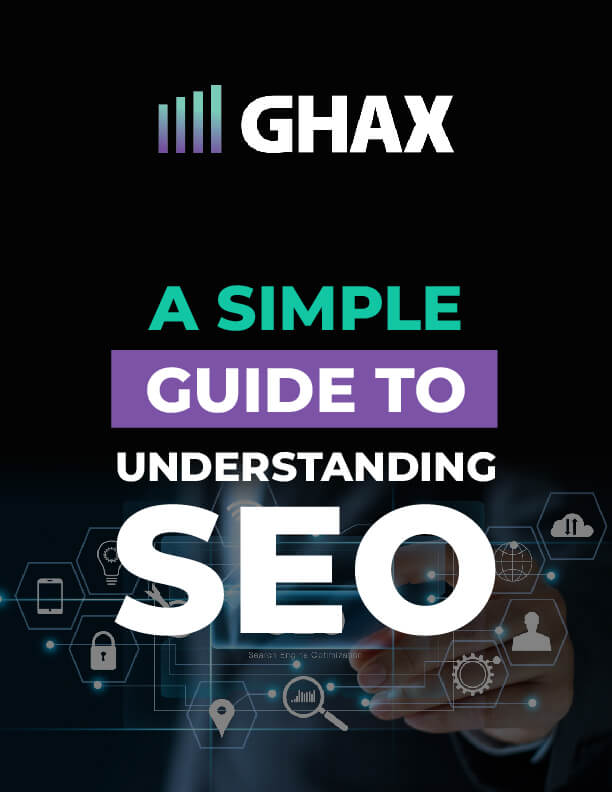Does your website perform well in terms of impressions and your position in the search engine results page, but do you not yield the volume of visits you’d imagine you should be getting?
No click searches can prove to be a major challenge to businesses who invest time, effort, and money to improve their local SEO listing.
While no click searches don’t bring the level of traffic that you believe your site should get but are they bad for your business?
In this article, we’ll discuss Google My Business and no-click searches and discuss what it means for your business.
What Are No-Click Searches?
No-click Google searches are where someone types in a search term into Google and then find out the information that they need without having to click through to a single website.
Over half of all Google searches end up being no-click searches. The majority of no-click searches come through on mobile devices such as smartphones rather than from desktop.
But what causes users to make a Google search and then not click on the results.
There are two main causes for no-click searches:
- Improvements in Search Engine Results Pages
- An increase in mobile searches
Why does this happen?
Well, the reason that this happens is that the search engine results page returns all of the information needed to answer the search query.
For example, you may have searched for opening times for a restaurant that you’d like to go to. This information may appear in a boxed-off section on Google, such as in the Local Pack or Featured Snippets sections.
Responses to commonly asked questions may come in the format of a list, block of text, video, or a chart.
Why Does Google Make No-Click Searches Possible?
As a business owner, you may ask yourself why Google would make the search engine results page display the answers to queries so that people won’t need to click through to the site. Especially considering search engines are there to help websites get seen.
It all boils down to user experience.
Google knows that people want to find accurate information instantly. To help those users get a quick answer to those straightforward questions, Google will find and return the relevant information and display it in the search engine results page.
What are the Three Types of No Click Searches?
The three types of no-click searches include direction-orientated, database-orientated, and dictionary- orientated searches.
- Direction-oriented searches include results relating to locations and places. This type of search will often return local businesses and will often have tags such as “near me.”
- Database-oriented searches will return results for dates and times, currency conversions, math, or other small pieces of information.
- Dictionary-oriented searches are items such as names, or encyclopedia, dictionary, or thesaurus responses.
Are You Creating Content With All Types of User in Mind?
While clicks throughs are an essential metric that businesses should look at improving in their business, you need to ask yourself whether it is the be-all-and-end-all of your digital marketing strategy.
It is easy to get blindsided in your attempts to improve your search rankings and forget that you should be in the business or attracting customers, not clicks.
Given the high percentage of people that prefer to find their information out through the SERP rather than clicking through, you must appeal to this type of user. After all, even though these users are not website visitors, they are still your customers.
To do this, you will need to create and optimize your website content so that all of the relevant information appears in the SERP without the need for users to click through to your site.
One of the best ways that local businesses can do this is through Google My Business optimization.
What is Google My Business?
Google My Business is an essential tool that all local businesses should be using to attract their customers.
The tool is both free and easy to use. It allows businesses to manage their web presence across Google search and maps to increase the visibility in local searches.
How do You Optimize Your Site for Google My Business?
Signing up with Google My Business is only part of the process of ensuring that your site gets featured in the type of no-click searches that will be beneficial to your business.
Verify Your Business With Google My Business
Your first task will be to claim your business with Google My Business. Register online, and Google will send you a four-digit PIN through to your business registered address. This will take up to 14-days to arrive.
Once you’ve received your PIN, you should confirm this will Google.
Fill Out Your Profile
Once you’ve verified your business with Google, you’ll need to make sure they have all of your details.
Complete your Google My Business profile in full.
Although many of the information boxes are optional, the more details you can provide, the better your chances will be of being able to provide the no-click search information that will ultimately drive trade to your business.
If you leave a field blank, then Google will ask users to fill in this information for you. That means that you’ll have no control over the details that users input.
Blank fields could be taken advantage of by your competitors, or others who may have malicious intent.
Make Sure Your Profile Information Is Up-To-Date
If you change your opening hours or any other important information about your business, this needs to be kept up-to-date.
If your hours change seasonally, make sure that you always keep on top of making updates to your information as often as is required.
Outdated information could cost you business. If your customers turn up based on the opening hours you’ve got listed on Google and find that you’re closed, this will leave a bad impression of your company.
Ensure Your NAP Details are Consistent
Your customers want to get in touch with you. But if Google brings up contradictory name, address, and phone number (NAP) information, then this could be confusing for your customers.
If there are differences in the NAP information that you have listed on your Google My Business in comparison to your website, and other business listings, then this can harm your rankings.
Google does not want to provide incorrect responses. Where there are inconsistencies, you may give your SERP position to your competitors.
You may be inclined to try and add some keywords to your name to try and increase customers contacting you when they use more general search terms. However, you should avoid doing this as it will cause confusion for customers that already know your name.
Make Sure You’re Listed in the Right Categories
There are nearly 4,000 different business categories that you can choose from on Google My Business. You can define your business with one main category, and then nine secondary categories.
You can use a tool to check all of the available categories. This will help you to identify the categories that are the most relevant to your business.
If your primary category does not match your business, it will affect your rankings, and ultimately, you’ll miss out on customers.
Similarly, your secondary categories should all be relevant too. If you’re trying to make a connection with an irrelevant category, then you’ll miss out.
Do your keyword research to make sure that you’re using the categories that most suit your business.
Include Pictures
Photos will add value to your Google My Business listing.
By including semi-professional images, you’ll be able to demonstrate that your business is legitimate. Good quality images that help put a face to your business will help build trust with your customers.
The higher the quality of the photo, the better. Try and get images of both the interior and exterior, showing as much detail of your premises, branding, and products.
Including pictures of your team will help to give your business the human touch.
If you’ve made any changes to the appearance of your business premises, then you should update the images on your Google My Business.
You can enhance your Google My Business photos by optimizing them. To do this, fill in the alt text, titles, captions, and geotagging information associated with each image.
Get Reviews
Reviews will help your ranking position on Google Maps. Not only that but if you have a good amount of positive reviews, it will help to legitimize your business and make it appear trustworthy.
You should have a strategy in place to get as many reviews as possible.
One way that you solicit reviews from real customers is to email those on your mailing list. Drop a link to your Google My Business profile and ask for honest feedback.
Don’t create false reviews to increase the percentage of good reviews you have. Users searching for reviews of your business will see through the fake responses, and this will harm your reputation rather than improve it.
Where possible, try and encourage users to leave in-depth comments. Blank or sparse reviews won’t really add value.
If you have a review on Google My Business, go and reply to the comment. Even if you’re just thanking someone for their feedback, this will show the Google algorithms that you are an active and responsive business.
Try your best to provide an in-depth response that is tailored to the actual comments. Acknowledge any criticisms and use empathetic language in your response. Avoid getting drawn into an argument or writing a defensive reply.
Take Advantage of Posts on Google
One thing that you should not overlook when trying to improve your Google My Business ranking is the use of interactive posts.
Posts can add considerable value to your listings. You can highlight articles on your website, or provide information and upcoming promotional activity.
Your posts will last for 14 days, and you can post up to 10 at a time. You can keep your posts up-to-date by refreshing the content that you are posting, or you can re-post the same pieces after they expire.
Your posts should be around 1,000 words, and you should include keywords. If you reference ‘Google My Business in the first paragraph, you’ll benefit from more views.
How do You Measure the Success of Your Google My Business Listing?
Aside from checking your position in the Google local rankings, how can you measure the success of your Google My Business listing?
Without click-throughs to your website, it can be a challenge to understand how you are actually performing.
You’ll need to define the metrics that you will measure your success. Above website clicks and page views, you should be looking at the number of phone calls you are receiving as well as the number of visitors and sales.
How Can a Digital Marketing Company Help with Your Local SEO?
Getting your local SEO perfect can take a lot of work, and not every business has the time or the expertise to manage the whole process.
In addition to this, competition is tough. If your competitors have invested heavily in developing their local SEO, they’ll no doubt rank above you for many terms.
Making use of the services of a professional digital marketing company will mean that you’ll get all of the help you need to get your Google My Listing right to the top of the search engine results pages.
Not only will an SEO specialist be able to get your listing to the front of Google, but they’ll also be able to ensure that you stay there.
For help making the best of all of your no click searches through Google My Business optimization, get in touch with us and see how we can help build the local SEO strategy that specifically works for your business.




